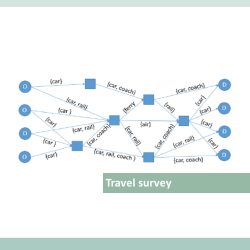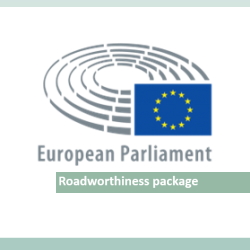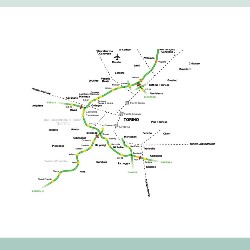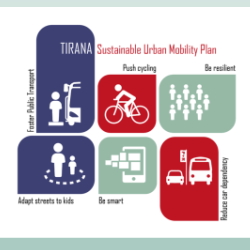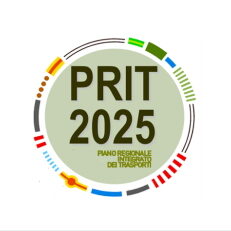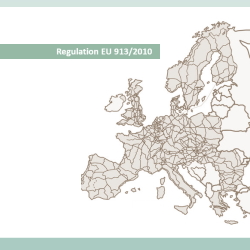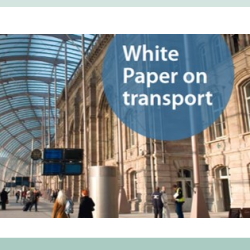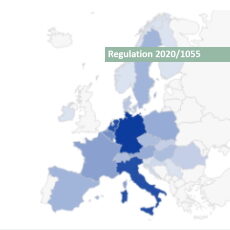- All
- African projects
- assessment
- assessment selected projects
- Assessment selected projects 2
- Assessment selected projects 3
- Assessment selected projects 4
- ASTRA
- Cost Benefit Analysis
- Electric mobility and ITS
- MOMOS
- planning
- planning selected projects
- planning selected projects 2
- planning selected projects 3
- planning selected projects 4
- planning selected projects 5
- projects
- Railways projects
- research
- research selected projects
- research selected projects 2
- research selected projects 3
- studies
- studies selected projects 1
- studies selected projects 2
- studies selected projects 3
- studies selected projects 4
- studies selected projects 5
- TRTingegneria
- TRUST
- urban mobility
- A survey in 20 European cities on behalf of the JRC of the European Commission to explore the impacts of COVID-19 outbreak on urban transport The Covid-19 crisis triggered major changes in users’ mobility preferences in light of health risks and restrictions, as well as changes in terms of different working patterns and economic activity that have impacted on the demand of urban mobility. The study was aimed at collecting data through a survey in 20 EU cities, in order to understand individuals’ urban mobility patterns in light of the changes introduced by the Covid-19 pandemic. In specific, the exercise analysed how the health crisis impacted on elements like: mode choice, transport costs, trip purposes, frequency of movements, external factors driving the transport choice. The impact of disruptive elements, such as teleworking was also explored. TRT was responsible for the research, which was managed by IPSOS. The 20 cities were distributed in 11 EU countries; they included large metropolitan areas as well as medium cities with different levels of diffusion of the Covid-19 virus, different role of public transport and bike and different level of road congestion. The survey involved 500 individuals in each city. Two different methodologies were used to collect responses: a CAWI questionnaire and a CATI questionnaire. The combination of the two methods ensured an affordable and representative sample.
- Technical assistance for study and research activities of the Interreg Project «SUBNODES» The project SUBNODES (Connecting the hinterland via Sub-nodes to the TEN-T core network) is funded by the Interreg programme Central Europe, which targets at enhancing the links of the hinterland with the main hubs of the TEN-T through regional centres, the so-called «SUBNODES». The aim of the technical assistance is support the preparation of the Action Plan of the Lombardy Region to improve the connections of SUBNODE cities of Brescia, Bergamo, Varese and Como with the airports of Malpensa, Linate and Orio al Serio, core nodes of the TEN-T in Lombardy. The technical assistance activity to deliver the Action Plan consists of four phases: Analysis of the current situation of the transport network and of the links of the subnodes with their catchment area and towards the main nodes of the TEN-T. The analysis delineate the baseline to identify new measures and actions Elaboration of a SWOT analysis Identifications of solutions to specific problems to improve passengers transport services Recommendations for actions development The technical assistance also supports stakeholders consultation and the presentation of the Action Plan in two publications.
- Roadworthiness package: Legal transposition, concrete functioning and readiness for the future The roadworthiness package was adopted in 2014 and is composed of three directives, focused respectively on periodic roadworthiness tests (Directive 2014/45/EU); vehicle registration documents (Directive 2014/46/EU); and technical roadside inspections of commercial vehicles (Directive 2014/47/EU). The objectives of this research paper are: to check how Member States have transposed the package from the road safety perspective and to determine whether the transposition has effectively led to the application of common standards; to check whether the national measures transposing the safety provisions of the package are sufficient and adequately shaped to achieve its safety objectives; The analysis of the legal transposition by Member States was performed by considering the national legal measures transposing the roadworthiness package as they had been notified to the EC (more than 450 documents from 27 Member States) Direct survey among responsible authorities at national level involved 23 different organization from 21 MS completed by 7 direct interview to ministries and other national authorities. TRT had lead a multidisciplinary international consortium made by OIR, Arcadia International and M&E Factory, further supported by CORTE Road transport is the most common means of transport in the EU, as well as the most important cause of accidents. In this respect, the European Union has developed a transport policy oriented towards safety and security through common standards and rules. A roadworthiness package was adopted at European level in 2014, aimed at improving road safety through common rules on periodic roadworthiness tests for motor vehicles and their trailers (Directive 2014/45/EU), vehicle registration documents (Directive 2014/46/EU), and roadside inspections of commercial vehicles (Directive 2014/47/EU). The purpose of this European implementation assessment is to check whether the transposition of safety measures included in the package has led to common standards in practice, as well as to assess the current functioning of the exchange of information and the mutual recognition of technical controls between Member States. For more information Implementation of the roadworthiness package: European implementation assessment, the study carried out by TRT. Go to the European Parliament website
- Assistance for the highways A21 – A5/SATT concession tender The project had the objective of verifying how the proposal for a new tolling system, along the highwat sections subject to the concession tender, was such as to ensure the protection of consumer rights, encourage the economic growth of the territory, and be oriented towards environmental protection. The object of the concession tender includes the highway sections SATAP A21 and ATIVA A5/SATT (Turin Ring Road Highway System). TRT’s work focused on a series of elements and consequent impact assessments related to the introduction of an innovative tolling system involving the SATT network (currently an open freeway system) and also partially involving the A5 and A21 highways. The elements of the new tolling system considered were: Implementation of a “free flow” system to replace the current open system with barriers User information system Choice of payment method and service provider Agreements with local realities to promote territory development Redevelopment of barriers Development of service areas
- The first Sustainable Urban Mobility Plan for the capital city of Tirana, Albania The study is part of a larger initiative called SUMSEEC II (Energy-efficient Urban Mobility in South-eastern European Countries), funded by the German Ministry for Economic Cooperation and implemented by GIZ. TRT supported the Municipality of Tirana in the development of their first SUMP, according to the latest European guidelines. The process started in October 2019, and was finalized in July 2020. The planning process pursued a strong collaboration with the different city departments and local stakeholders. Four large workshop were organized at relevant milestones, to guarantee the participatory approach that characterize a SUMP. The first part of the process was aimed at building a comprehensive analysis of the current city status based on previous studies, evidences collected on the field, discussions and feedbacks gathered from the stakeholders in dedicated workshop and surveys held until January 2020. The second part, focused on the drafting of the planning document itself, was accompanied by series of online focus groups and questionnaires that guaranteed and facilitated the participative process despite the lockdown in Tirana during the COVID-19 pandemic outbreak in Spring 2020. The proposed planning scenario is the result of the assessment of three alternative options by means of a Multi-Criteria Analysis. It includes a set of coordinated measures structured in six key strategies identified as founding policy pillars that respond to Tirana’s mobility challenges. For more information “SUMP for the City of Tirana”. Case study published on Eltis Platform
- Drafting of Operational tools guidelines for the promotion of sustainable mobility measures. PRIT (Integrated Regional Transport Plan) guidelines update The support provided by TRT for the drafting of the Guidelines to boost sustainable innovative mobility in the urban areas is part of the definition of the new Integrated Regional Transport Plan (PRIT 2025) of the Emilia-Romagna Region. The objective of the guidelines prepared by the Regional Administration Territorial Planning Service is to provide support to local administrations in the their preparation of Sustainable Urban Mobility Plans (SUMP), specifically guiding them on matters like: The need of collecting quantitative and qualitative data in order to develop a framework to support the analysis the mobility demand trends and characteristics, also taking into account the pandemic crisis. The analysis of innovative tools and actions related to the concept of sustainable mobility planning. These include ITS tools, use of big data in the context of mobility forecast studies, dissemination and enhancement actions related to sharing mobility and self driving vehicles. The development of collective services more suitable for intercepting the real demand for mobility, such as on-demand transport services and Mobility as a Service models. The guidelines presented in June 2021 are accompanied by an evaluation structure (MOMOS Model) capable of recognizing the sustainability dimension of the covered actions. For more information: It is possible to download the technical fact-sheets on the Regional government website (only available in Italian) The Emilia-Romagna Region presented the results of the project in the conference “Planning transport: PRIT2025 and sustainable mobility” held on 10 November 2022 in the Aula Magna of the regional headquarters. The slides and the conference program are available here.
- Evaluation of Regulation (EU) No 913/2010 concerning a European rail network for competitive freight The evaluation support study covered all the provisions of the Regulation, all the European countries participating in a Rail Freight Corridor (RFC) and addressed the period from the establishment of the RFCs until 2020. The key overall challenge addressed by the Regulation is the need to improve the competitiveness of rail freight compared to other transport modes. The starting point of the Regulation is that the quality of the rail freight capacity provided by the infrastructure managers to the operators of international rail freight services needs to improve in order to make it happens. The study identified the impact of the Regulation by comparing the actual developments in the rail freight sector, i.e. with the Regulation in place, with respect to a baseline situation describing the likely developments that would have occurred without this policy intervention. The study also took into account the activities related to the RFCs going beyond the provisions of the Regulation, addressing for instance technical and operational interoperability along the RFCs. Furthermore, the study covered the activities of the rail sector undertaken in the period of analysis and contributing to the objectives of the Regulation. Practically, the study examined the relevance, effectiveness, efficiency, coherence and EU added value of the Regulation. The analysis was based on data collected from a range of primary and secondary sources and direct input from concerned stakeholders, collected using interviews and surveys with national authorities, the rail industry and the Commission’s open public consultation. The study has found that the Regulation has been implemented as far as the designation, the governance and the investment and management of the RFCs are concerned. The concerned stakeholders have fulfilled the provisions of the Regulation in a formal sense and within their actual scope. Viewed on its own, however, the Regulation has had a relatively limited impact in achieving the general, specific and operational objectives and has not led to a broad adoption of the tools, which have produced the intended effects only to a limited extent. TRT acted as leader of the study team built in partnership with M-Five (DE), MC-Vienna (AT) and TEPR (UK). TRT was responsible for (i) the design of the evaluation, (ii) the definition of an evaluation baseline, (iii) the analysis of the stakeholders consultation, (iv) the analysis of the effectiveness and efficiency of the Regulation and (v) the estimation of costs and benefits from the implementation. For more information Evaluation of EU regulation on TEN-T rail freight corridors, the study carried out by TRT. Go to the publication
- Evaluation of the White Paper ‘Roadmap to a single European transport area – towards a competitive and resource efficient transport system’ The 2011 Transport White Paper “Roadmap to a Single European Transport Area – Towards a competitive and resource efficient transport system” is the document with which the European Commission has outlined the strategy on the future EU transport system and which defines the political agenda for the next decades. The main objectives of the strategy are (i) reduce carbon dioxide emissions in transport to a level that is 60 % below that of 1990; (ii) reduce the transport sector’s dependence on oil; (iii) reduce congestion growth. The strategy is articulated through 40 action points and 132 initiatives aimed at achieving 10 operational targets at different time horizons (2030 and 2050). TRT, member of the consortium led by Ricardo NL and participated by M-Five, E3Modelling and TEPR is responsible for carrying out the mid-term evaluation of the effectiveness of the strategy in order to support the European Commission in identifying any proposals for revising the document. The purpose of the evaluation is to provide a robust evidence-based assessment of the White Paper and the actions following from it since its adoption in 2011. It examines the effectiveness, efficiency, coherence, relevance and EU added value of the White Paper in line with the Better Regulation Guidelines. The evaluation looks at the identified needs for transport policy, the objectives and goals set in the White Paper, the proposed initiatives, reached outcomes and their results, as well as the overall impact of the strategy since it was put in place. The results of the evaluation are intended to inform subsequent decisions of the Commission on possible priorities for the future agenda of EU transport policy. For more information Evaluation of the White Paper ‘Roadmap to a single European transport area – towards a competitive and resource efficient transport system’. Final report, March 2021
- Data gathering and analysis of the impacts of cabotage restrictions on combined transport road legs: support study for the evaluation of Regulation 2020/1055 (Mobility Package 1) Regulation 2020/1055 will allow Member States to apply the so-called cabotage restrictions to road legs of international combined transport operations if those road legs do not cross a border. The objective of the study was to provide the Commission with an analysis on the market impacts of the new restrictions. To that end, TRT conducted a survey among major combined transport organisers and terminal operators, covering all modal combinations and a wide range of Member States. The survey focused on the collection of data and information on combined transport road legs, and on the compliance strategies and impacts foreseen by the respondents. Based on the results of the survey, the study evaluated the quantitative impacts of cabotage restrictions on the European combined transport market, including estimates of the expected change in combined transport volumes, market share, modal shift and other transport activity indicators. According to the results, the rail-road segment would suffer more than the other modes considered (short sea shipping and inland navigation) mainly because of the tighter competition of the road only carriage. Relevance of the various compliance measures for CTOs (% of CT operations concerned by each measure) For more information Mobility Package 1 and impacts on combined transport sector, the study carried out by TRT. Go to the publication

